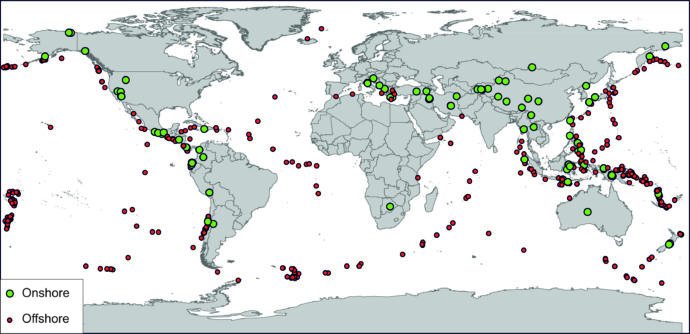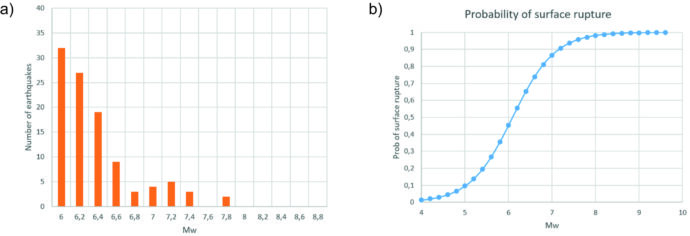Five years ago, on October 30, 2016, a Mw 6.5 earthquake nucleated along the Vettore Fault in Central Italy.
This event is particularly interesting because its surface rupture overprinted the faulting occurred only 3 months earlier, on August 24. In the last 5 years, at least 2 other cases of repeated rupture in a short time interval were observed, i.e., the 2016 Kumamoto (Japan) and 2019 Ridgecrest (US) sequences.
Fault re-ruptures are currently not accounted for in seismic hazard assessment; should paleoseismology folks care about re-ruptures? To answer this question, it is necessary to understand how common re-ruptures are.
So, I checked the USGS catalogue, looking for earthquakes with M > 6, depth < 30 km occurred since January 1st, 2016. I chose these thresholds because I’m interested in surface-rupturing events, but maybe the values need some fine-tuning. The search returns 490 earthquakes. Then, I filter out events with epicenters offshore, since surface faulting is more difficult to document there. A total of 104 earthquakes (21% of the total) occurred onshore (Figure 1).

Figure 2a shows the distribution of the 104 earthquakes according to magnitude (bin size 0,2 magnitude units). Now I calculate the expected number of surface-rupturing events, using the probability curves provided by Youngs et al. (2003; their Equation 4) and shown in Figure 2b. Out of the 104 earthquakes, it can be expected that 63 should have produced surface faulting.

Finally, let’s check how many re-ruptures have been actually observed: as mentioned earlier, they are at least Kumamoto, Ridgecrest and Central Italy. Three out of 63 means that ca. 5% of the shallow M > 6 earthquakes onshore include the repeated rupture of the same fault strand(s).
This has strong implications for paleoseismology, because it is virtually impossible to identify events occurring few months or years apart. In turn, this may affect the computation of key parameters for seismic hazard assessment, such as recurrence interval, slip per event and elapsed time.
These ideas are at the core of a project I’m writing right now, called REDEFINE: “RE” stands for re-rupture and Task 1.1.3 will be the update of the probability curves of Figure 2b – no more spoiler on the project!
If I’ll get that 1 million €, you’ll hear more on re-ruptures from me 😊


Stephane Baize | 2021-11-17|16:41 (UTC)
One striking event that re-ruptured the same fault is the 2019 in New Ireland (PPG). See the Temblor blog here for rough info: https://temblor.net/earthquake-insights/shaking-in-the-southwest-pacific-8680/
Probably out of your catalogue because close to seashore, but definitely the fault ruptured the New Ireland island on a short portion of its total length.